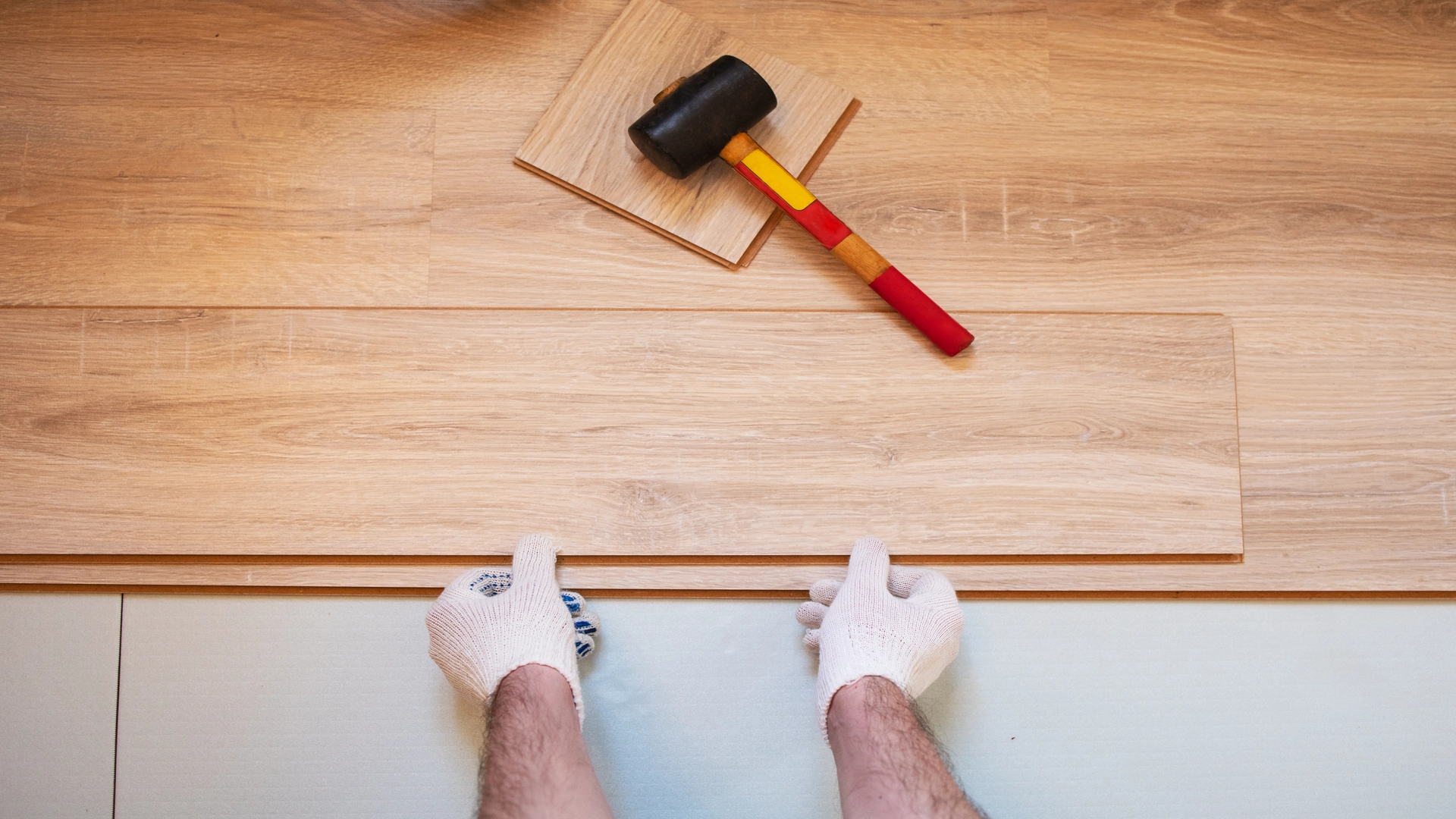Choosing the right flooring for your basement is more than just a design decision; it’s an investment in the comfort, functionality, and overall health of your living space. In this comprehensive guide, we’ll delve into the world of basement flooring options, shedding light on the pros and cons of each. So, let’s embark on a journey to transform your basement into a space that not only looks good but stands the test of time.
Basement Flooring Options: Why Basement Flooring Matters

When it comes to improving your home, it’s super important to understand why picking the right basement flooring matters a lot. This decision affects how your basement looks and works. There are many basement flooring options out there, and each one does something different. Some are good at keeping out moisture, while others help with insulation. It’s not just about making things look nice; it’s also about making your basement last longer and be comfy.
You’ve got classic choices like concrete and vinyl, and more modern ones like laminate or carpet tiles. Each option has its own job to do. As we look into all these different basement flooring options, it’s clear that it’s not just about how things look – it’s about making your basement tough, easy to take care of, and a nice place to be. So, choosing the right basement flooring is a big deal if you want to turn your basement into a cool and comfy space.
Basement Flooring Options: Types of Basement Flooring Options

3.1 Carpet Tiles: Warmth and Comfort
When you’re thinking about what to put on the floor of your basement, consider Carpet Tiles. These tiles are a great choice because they make your basement warm and comfy. They feel nice under your feet, making the basement a cozy and inviting place.
What’s cool about Carpet Tiles is that they’re easy to put in, and you can pick from lots of colors and patterns to make your basement look just how you want. If part of the carpet gets messed up, no worries – you can easily replace just that part. So, when you’re thinking about basement flooring options, Carpet Tiles are a smart choice. They’re both practical and comfy, giving your basement a nice and good-looking floor.
3.2 Vinyl Flooring: Durability Redefined
Discover the ultimate in toughness with Vinyl Flooring: Super Durable Basement Floors! When you’re exploring Basement Flooring Options, nothing beats the resilience of vinyl. Among all Basement Flooring Options, vinyl stands out as the go-to choice for withstanding basement challenges. It’s like a superhero against moisture, making it perfect for damp basements.
And guess what? It won’t break the bank! Vinyl is not just strong; it’s budget-friendly too. So, if you’re a homeowner wanting a reliable and good-looking solution for your basement, vinyl is the answer. It’s like the superhero of Basement Flooring Options, setting new standards for durability. Say goodbye to worries about your basement floor – with vinyl, it’s tough, affordable, and stylish!
3.3 Laminate Flooring: Affordability and Style
When you’re thinking about what kind of floor to put in your basement, consider Laminate Flooring. It’s a great choice because it gives you a nice look without breaking the bank. This flooring option is flexible – it looks good and fits different styles, all while being easy on your wallet. Laminate is a smart pick among Basement Flooring Options because it’s not as expensive as hardwood or tile.
But here’s the cool part: even though it’s cheaper, it still comes in lots of cool designs and patterns that make it look fancy. And guess what? Putting it in is a breeze, and once it’s down, you don’t have to work hard to keep it looking good. In a nutshell, if you want your basement to look awesome without spending too much money, go for laminate flooring. It’s the way to get a cool style without emptying your piggy bank.
3.4 Tile Flooring: Elegance and Water Resistance
Choosing the right floor for your basement can be tricky, but tile flooring is a fantastic option that combines style and protection against water. When we talk about “Basement Flooring Options,” there are many choices, but tiles are the clear winner. They bring a fancy touch while tackling the specific challenges of basements.
Whether your style is classic or modern, tile flooring not only makes your basement look better but also gives you a tough surface that can handle possible water issues. The term “Basement Flooring Options” covers a bunch of choices for basement floors, and tiles shine as a practical and cool solution for those who want both sophistication and water resistance.
Factors to Consider When Choosing Basement Flooring Options

4.1 Moisture Resistance: A Critical Factor
When you’re thinking about what kind of flooring to use in your basement, there’s one super important thing to think about: Moisture Resistance. This means how well the flooring can handle dampness and wetness. Basements often get a bit damp, so it’s crucial to pick a flooring that can handle that. Choosing a type of flooring that’s good at resisting moisture is like giving your floor a superhero cape—it helps it stay strong and last a really long time.
Vinyl, ceramic tiles, and epoxy coatings are great choices because they create a special shield that keeps water out and protects your basement floor. This isn’t just about preventing water damage; it’s also about making sure your basement stays comfy and lasts a long time. So, if you want a basement that’s cozy and won’t get soggy, it’s smart to focus on Moisture Resistance when checking out Basement Flooring Options.
Remember, the key to a dry and comfy basement is choosing the right Basement Flooring Options that can handle moisture like a superhero!
4.2 Traffic and Usage Patterns: Tailoring the Choice
Choosing the right floor for your basement is super important, and it all depends on how much people walk around and what you do down there. “Basement Flooring Options” basically means there are different kinds of floors you can pick from. Some materials, like vinyl or ceramic tiles, are great for places where lots of people walk, like hallways.
But if your basement is more chill and not many people go there, softer things like carpet could be better. It’s crucial to think about what you do in your basement – if it’s a fun place for games and stuff, a tough and waterproof choice like luxury vinyl tile might be just what you need. By picking the right floor based on how much action your basement gets, you not only get a cool-looking floor but also one that can handle whatever you throw at it.
4.3 Installation Difficulty: DIY or Professional Help?
Deciding on the right Basement Flooring Options involves thinking about how hard or easy it is to put them in place: Do It Yourself (DIY) or get Professional Help? The level of difficulty varies depending on the type of flooring you choose. If you like doing things on your own, some options, like puzzle-like tiles or vinyl planks that click together, can be pretty simple to install without needing a pro.
But if you’re considering fancier choices like epoxy coatings or real wood floors, you might want a professional to make sure it looks great and lasts a long time. You should think about how good you are at this kind of work, what your chosen flooring needs, and any challenges your basement might have. Going from picking Basement Flooring Options to checking out how hard they are to install can help you pick something that you like and that works well for your project.
Basement Flooring Options: FAQ Section
What flooring is best for a damp basement?
The best flooring for a damp basement is usually something that can handle moisture well. Options like vinyl or ceramic tile are good because they resist water and are easy to clean. Another good choice is epoxy flooring, which creates a waterproof barrier. Always make sure the basement is properly sealed and any moisture issues are addressed before installing any flooring.
Can I install basement flooring myself?
Yes, you can install basement flooring yourself. Just make sure to choose a flooring option that works well in a basement environment, prepare the surface properly, and follow the installation instructions carefully. If you’re unsure, you can also consult online tutorials or seek advice from a home improvement store.
Are there eco-friendly basement flooring options?
Yes, there are eco-friendly options for basement flooring. You can choose materials like cork, bamboo, or reclaimed wood, which are sustainable and environmentally friendly. Additionally, certain types of tiles made from recycled materials or natural stones can be good choices. It’s important to look for flooring options that are durable, low in VOCs (volatile organic compounds), and sourced or manufactured in an eco-friendly way to make your basement more environmentally conscious.
How to maintain basement flooring?
Keeping your basement flooring in good shape is important. Here are some simple steps to maintain it:
1. Regular Cleaning: Sweep or vacuum to remove dirt and dust. Mop with a damp mop or use a mild cleaning solution suitable for the flooring material.
2. Avoid Harsh Chemicals: Stay away from strong chemicals that can damage the floor. Stick to gentle, non-abrasive cleaners.
3. Quick Spill Cleanup: Wipe up spills promptly to prevent stains and damage. This is especially important if you have carpet or wooden flooring.
4. Use Mats and Rugs: Place mats at entry points to trap dirt and moisture. Area rugs can add extra protection and make cleaning easier.
5. Check for Leaks: Regularly inspect for leaks or moisture issues. Fix any problems promptly to prevent water damage and mold growth.
6. Control Humidity: Basements can be prone to high humidity. Use dehumidifiers or proper ventilation to maintain optimal humidity levels.
7. Protect Furniture Legs: If you have furniture in the basement, use protective pads on the legs to prevent scratches or dents.
8. Trim Pet Nails: If you have pets, keep their nails trimmed to avoid scratches, especially on hardwood or laminate floors.
9. Regular Inspections: Periodically check for signs of wear and tear. Repair or replace damaged areas promptly.
10. Follow Manufacturer’s Guidelines: If your flooring has specific care instructions, follow them. Different materials may require different maintenance approaches.
What is the average cost of basement flooring?
The average cost of basement flooring can vary, but it typically ranges from $2 to $10 per square foot. Keep in mind that the actual cost depends on the type of flooring you choose, such as carpet, vinyl, laminate, or tile. Some materials are more expensive than others, so it’s essential to consider your budget and preferences when deciding on basement flooring.
Conclusion:
Choosing the right basement flooring is a decision that goes beyond appearances. It’s about creating a space that aligns with your lifestyle, withstands the challenges unique to basements, and stands the test of time. Whether you opt for the warmth of carpet tiles, the durability of vinyl, the affordability of laminate, or the elegance of tiles, make an informed choice. Your basement deserves the best, and with the right flooring, it can become a haven of comfort and style.
